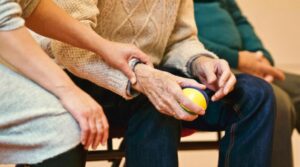Incontinence affects all ages and can be triggered by varying factors, including everything from stress to cognitive issues. Thankfully, there are many treatments available. These include diapers, bed pads, and exercise and diet suggestions.
Understanding this ailment, its causes, and the treatments available is a surefire way to manage it. Doing so will ensure it doesn’t affect your lifestyle or independence. Instead, you can carry on embracing life to the fullest without worry.
This guide gives insight into each type of incontinence to help you better understand your symptoms. Read on to learn more.
What Causes Incontinence
Many factors trigger incontinence. These include weight, pregnancy, and vaginal birth. It can also be hereditary, caused by age, trauma, or recent surgery. The good news? Numerous products on the market promise to make managing incontinence easier. These include adult diapers, pull-ups, lotions, anti-bacterial wipes, bed pads, and more. All promise discreet protection, and all can be purchased online.
The Different Types of Incontinence

There are various types of incontinence. Some require occasional protection, such as when working out or attending a pilates class. Others necessitate protection all day long, particularly if leakage occurs suddenly or your mobility is limited. To help you better understand the different types of incontinence and their causes, we’ve detailed more on each below:
1. Stress Incontinence
This type of incontinence occurs when your bladder is under pressure. It can cause urine to leak out when you laugh, sneeze, or cough. It’s often the result of damaged or weakened pelvic muscles or an issue with your urethral sphincter.
This type of incontinence is more prevalent in women than men. As well as embracing pelvic floor exercises, you can wear discreet panty liners or adult pampers to protect against unwanted leakage. These can help you to manage this ailment. How? By ensuring you stay dry, comfortable, and odor-free all day.
2. Urge (urgency) Incontinence

Another form of incontinence is urge incontinence. If suffering from this, you will feel a sudden, intense urge to urinate, even after going to the toilet. Urge incontinence is caused by overactive detrusor muscles. It can also be caused by a UTI or an enlarged prostate. These are the muscles responsible for controlling the bladder. Leakage varies between people, with some experiencing small dribbles and others a complete bladder emptying.
When treating this condition, talk to a healthcare professional. They will carry out a proper diagnosis. Why? Treatment varies between individuals. Until you know the exact cause, you won’t know which treatment route to follow or what products to invest in.
If you’re out and about, in a car, or at an event, feeling the sudden urge to pee can be an uncomfortable experience that will make you say no to invitations or activities rather than embrace them.
3. Mixed Urinary Incontinence

Mixed urinary incontinence is a combination of urge and stress urinary incontinence. In a nutshell, accidental leakage is connected to exerting yourself and urgency. You may strain too hard when picking up heavy bags, lifting weights, or stretching at the gym. Additionally, you may find excess urine leaks when you laugh too hard or sneeze.
4. Post-Micturition Dribble
If, after visiting the bathroom, you experience an involuntary loss of urine, you may be suffering from post-micturition. Why does this happen? Because urine remains in your urethra. This kind of incontinence is more common in men. Yet some women with poor muscle support can experience it. To avoid accidents from happening, you can wear protective underwear. To avoid this from happening at night and disrupting your sleep, visit the bathroom before you begin your nighttime routine. Then again, just before getting into bed.
5. Overflow Incontinence
This type of incontinence, labeled chronic urinary retention, occurs when you struggle to fully empty your bladder, which can cause frequent leakage. This is when investing in diaper pads or adult pull-ups is a must. These nifty products allow you to embrace gym workouts, yoga sessions, catch-ups with friends and travel without worrying about odor or discomfort.
Overflow incontinence is triggered by a blockage or an obstruction in your bladder or urethra and can be down to an enlarged prostate, diabetes, or neuropathy.
6. Total Incontinence
If your bladder is unable to store urine, you have total incontinence and will feel the need to pass urine constantly. This means you’ll leak urine often. To manage this ailment, you can invest in protective underwear and bed pads.
Causes of total incontinence include birth defects, a fistula (a tunnel-shaped hole), or spinal injuries.
The Bottom Line
Incontinence isn’t something to be ashamed of and affects people from all walks of life. To date, 200 million people worldwide. Understanding the causes of your incontinence, the treatments available, and taking on board diet and exercise suggestions, will help you manage this ailment easily. The result? You continue embracing the activities you love without worrying about accidental leakage.
From pads to protective underwear to pull-ups, exercises, and diet changes, there are many things you can do to manage your incontinence daily. All without dramatically affecting your lifestyle.



